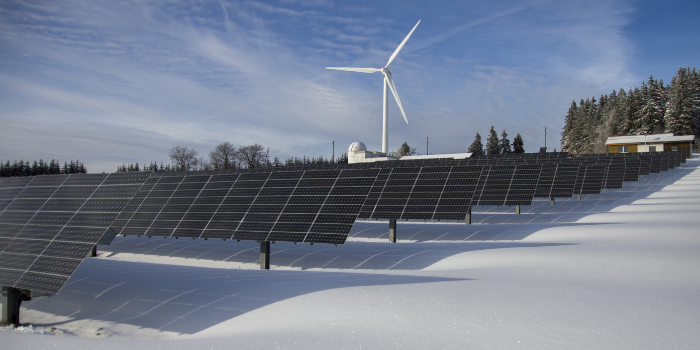
Fossil fuels are bad news for Wisconsin and our planet. They unleash astronomical amounts of carbon into the atmosphere that threaten to permanently alter the earth’s climatic system — wreaking havoc by submerging coastlines, intensifying storms, exacerbating forest fires, and increasing the likelihood of floods, heatwaves, droughts, crop failures, famines, refugee crises, and global conflicts. They degrade our ecosystems and poison our bodies with an onslaught of harmful pollutants, costing us our health and wealth — all while disproportionately affecting low-income and minority groups.
Unfortunately, Wisconsin relies heavily on these harmful fossil fuels. Nearly half of all our electricity comes from coal, and another quarter comes from gas. Wisconsin also lacks fossil fuel resources of its own, so we spend $14.4 billion a year importing energy from other states and countries.
To address this disaster, we need to transition to clean, renewable sources of energy that emit little to no pollution and can be used indefinitely and sustainably, without depletion or environmental harm. Wisconsin may not have any coal, gas, or oil — but we have plenty of wind and sun. In fact, even with existing technology, it’s technically possible for renewables to provide 100 percent of our energy needs, all while halting climate change, reducing pollution, protecting our environment, improving health, saving money, and creating jobs.
Currently, however, only about 10 percent of Wisconsin’s utility-scale electricity comes from renewables. Luckily, clean energy capacity is growing, thanks to improving technology and falling prices. Utility and renewable electricity companies just constructed a new wind farm in Lafayette County, and there are currently 3 new potential wind projects in southwestern Wisconsin. Growth in solar power is surging and is expected to increase by nearly 1000% over the next 5 years with 6 projects in development, including Badger Hollow Solar Farm in Iowa County and Two Creeks Solar in Manitowoc County, that together will power hundreds of thousands of homes. Xcel Energy has even committed to adopting 100 percent carbon-free electricity by 2050, and other utilities are taking notice.
We urgently need to move toward clean and renewable energy, and in Wisconsin, that means pushing for solar and wind power.
Solar power
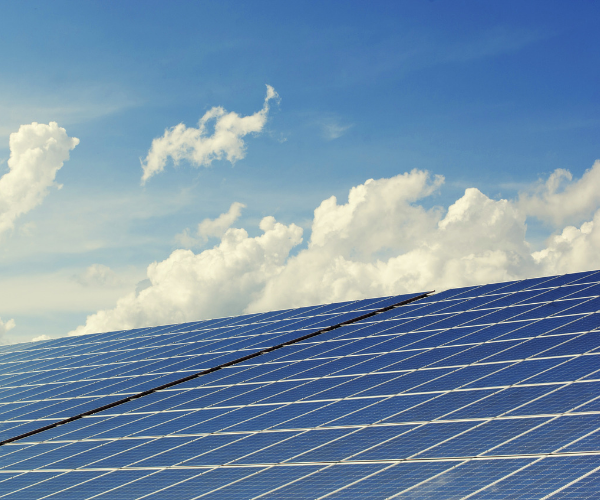 “I’d put my money on the sun and solar energy. What a source of power! I hope we don’t have to wait till oil and coal run out before we tackle that.”
“I’d put my money on the sun and solar energy. What a source of power! I hope we don’t have to wait till oil and coal run out before we tackle that.”
-Thomas Edison, 1931, according to his friend James Newton
Solar power generates electricity from the sunshine. While there are many ways to harness the power of the sun and transform it into usable energy, the most direct way involves constructing large panels of photovoltaic cells that convert light into electricity. Although building these panels can emit small amounts of carbon dioxide and require some rare metals as inputs, solar power emits no pollution while in operation and can be dismantled easily at the end of its life cycle. As a result, solar power is a clean and renewable source of electricity that can sustainably provide energy for decades.
Because the sun only shines during the day, batteries are needed to store the electricity and provide power at night. While battery storage has historically been a limiting factor in the development and deployment of large-scale solar, recent advances in technology have made batteries cheaper, larger, and more effective and propelled solar into the spotlight as a scalable and feasible energy resource.
Solar panels can be built on top of individual homes and businesses and provide smaller amounts of electricity for personal consumption, or they can be constructed in large utility-scale solar farms that can supply electricity to potentially hundreds of thousands of households. Individuals can even sell excess electricity they generate at their houses to the grid in a process called net metering.
Solar in Wisconsin
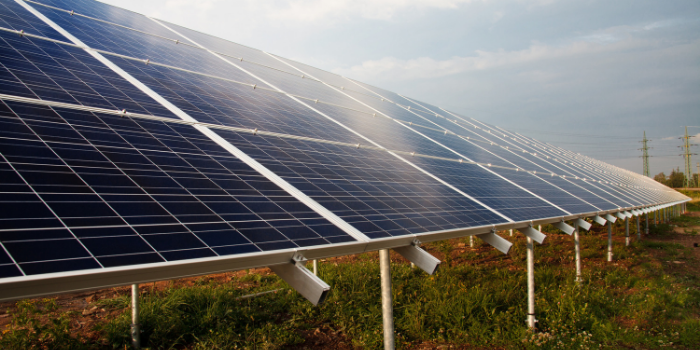
Solar power provides 103 MW of electricity — the equivalent of supplying energy to 17,000 homes — to Wisconsinites, and the industry employs more than 3,000 people. In addition to rooftop panels, there are more than 20 large-scale solar farms in the state that help supply this electricity. This represents, however, only 0.07 percent of Wisconsin’s electricity generation.
The potential for solar power in Wisconsin is enormous. While the state is not known for its sunshine, rooftop solar panels still work when it's cloudy and have the potential to generate 40 percent of Wisconsin’s energy needs. Additionally, only 234 square miles (out of Wisconsin’s total area of more than 65,000 square miles) of solar farms could supply 50 percent of Wisconsin’s energy. Germany, a country further north than Wisconsin with a geography and weather pattern less favorable for solar, is ranked fourth in the world for solar power output. If cold and dark Germany can do it, so can we.
It’s also cheap and keeps getting cheaper. The cost of a solar project has plummeted by 75 percent in the last decade, and solar is now the cheapest form of energy in most places, along with wind. That’s why solar power has grown rapidly in Wisconsin, and why experts predict that it will surge in the coming years. As previously mentioned, there are 6 massive new solar farms currently in development that will increase solar capacity in the state by a factor of 10 by 2021.
Wind power
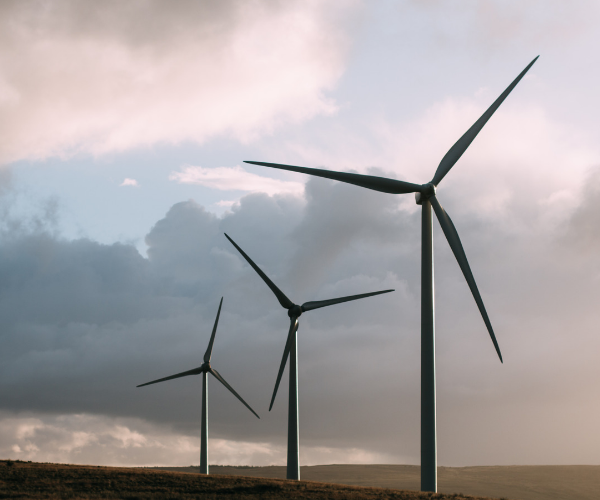 While humans have utilized wind power for centuries, today’s state-of-the-art wind turbines function a bit differently than the Dutch windmills of the fifteenth century. Wind propels the blades of a turbine, which rotates a shaft that connects to a generator that produces electricity. Modern turbines are tall with long propellers to better utilize the stronger and more stable winds higher above the ground. These individual turbines are constructed in large groups to form wind farms, either onshore or over water (where wind speeds are often higher).
While humans have utilized wind power for centuries, today’s state-of-the-art wind turbines function a bit differently than the Dutch windmills of the fifteenth century. Wind propels the blades of a turbine, which rotates a shaft that connects to a generator that produces electricity. Modern turbines are tall with long propellers to better utilize the stronger and more stable winds higher above the ground. These individual turbines are constructed in large groups to form wind farms, either onshore or over water (where wind speeds are often higher).
Since there’s essentially an infinite amount of wind, wind power is a clean, renewable source of energy that emits no carbon or other types of pollution while in operation.
Wind power, however, has often been unfairly maligned by its detractors. Wind turbines do not cause cancer or other diseases. They are also relatively quiet, operating at 50 decibels during the day (the volume of a refrigerator or a “quiet suburb”) and even less at night. While they can cast flickering shadows, new techniques can minimize this side effect. Critics also often complain that wind turbines diminish the aesthetic appeal of a landscape, but, in our opinion at least, they are much preferable to huge coal stacks spewing plumes of toxic smoke into the atmosphere. Perhaps the most serious concerns, however, relate to wind farms’ effects on wildlife. Although wind turbines can harm some birds and bats, new technologies aim to mitigate this issue by using safer turbine designs, audiovisual signals to warn animals to keep their distance, radar systems that can detect approaching animals, and better siting to place wind farms away from migratory routes. While the unnecessary death of any animal is serious, it’s important to keep the problem in perspective: fossil fuel generation kills 15 times as many birds as wind power, cell and radio towers kill 20 times as many, and cats kill nearly 7000 times as many. More wind power would actually be a net benefit for birds and bats because it would help mitigate the harms of climate change. Still, we will work toward making turbines safer for these flying animals and do thorough research during the siting process to minimize potential harm.
Wind in Wisconsin
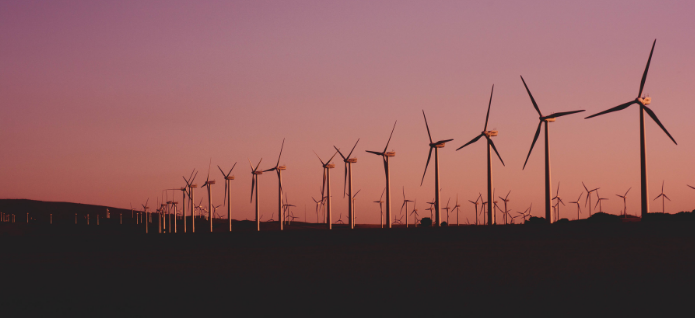
Today, Wisconsin has 10 utility-scale wind farms made up of 437 individual turbines that generate a combined 737 MW of electricity — enough to power more than 170,000 homes. Despite recent gains, these wind farms, however, only produce 3 percent of the state’s electricity. Compared to other states, Wisconsin ranks a middling 24th in terms of wind capacity. In fact, all of its neighbors generate far greater amounts of wind power: Michigan produces nearly 3 times as much as Wisconsin, Minnesota 5 times as much, Illinois 6 times as much, and Iowa 12 times as much. Iowa actually receives 37 percent of its electricity from wind, and the industry supports 9000 jobs — more indication that Wisconsin is lagging behind.
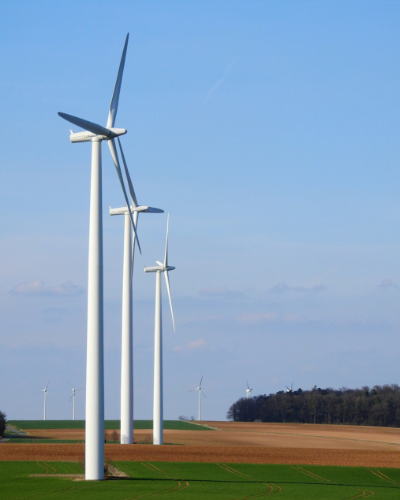 Still, there is major potential for wind power in Wisconsin: enough wind blows over the state’s land to provide four times as much energy as we need. In the last 9 years, the price of wind-powered electricity has fallen by an astonishing 69 percent, which makes it cheaper than fossil fuels. This declining price has already begun spurring investment in the construction of new wind farms. Right now, there are three new wind projects working their way through the regulatory process, which, if approved, would increase Wisconsin’s wind capacity by 40 percent.
Still, there is major potential for wind power in Wisconsin: enough wind blows over the state’s land to provide four times as much energy as we need. In the last 9 years, the price of wind-powered electricity has fallen by an astonishing 69 percent, which makes it cheaper than fossil fuels. This declining price has already begun spurring investment in the construction of new wind farms. Right now, there are three new wind projects working their way through the regulatory process, which, if approved, would increase Wisconsin’s wind capacity by 40 percent.
Situated next to both Lake Michigan and Lake Superior, Wisconsin is also ideally positioned to harness offshore wind power. Not only is wind over the Great Lakes stable, strong, and unimpeded by geographic obstacles, but population centers like Milwaukee and Kenosha are conveniently located on the shores of Lake Michigan — meaning the electricity wouldn’t need to be transported great distances. Despite potential problems posed by wintertime ice, the Great Lakes also have other advantages over ocean waters for sustaining wind power: they’re shallow, with smaller waves, no hurricanes, and less commercial and fishing traffic. Newly developed turbines, which are bigger and provide 3 times as much power as turbines constructed just 5 years ago, can also be built farther away from shorelines. Offshore wind in Wisconsin could potentially provide more than 116 GW of electricity, or enough to power 27 million homes. For perspective, there are just 2.3 million households in Wisconsin. Additionally, capturing this offshore wind on the Great Lakes could also support around 13,000 to 120,000 jobs. More research needs to be conducted, especially in regard to appropriate siting geared toward minimizing cost, protecting animal life, and preserving scenic views, but the potential is huge.
The Benefits of Renewables
-
Renewables do not contribute to climate change. Although the process of constructing solar and wind farms may temporarily release greenhouse gases, they generate zero emissions while in operation. Because nearly 28 percent of greenhouse gas emissions come from the electricity sector, eliminating this source of warming will help to mitigate climate change and avert its disastrous consequences.
-
Renewables pollute less. Beyond reducing carbon emissions, converting to clean and renewable sources of energy would reduce other types of pollution as well. Renewables don’t poison aquatic habitats with toxic substances that lead to fish kills, nor do they damage forests and crops through acid rain production or indirect ozone pollution. They also require very little water to operate and are already saving billions of gallons of water annually. Since renewables don’t require fuel to generate electricity, solar and wind farms are not only indefinitely sustainable, but they eliminate the need for the environmentally destructive practices of fracking and coal mining.
-
Renewables come with health co-benefits. Unlike fossil fuel power plants, solar and wind farms don’t release harmful pollutants like NOx and particulates into the atmosphere, nor do they release carcinogens and heavy metals into waters. Thus transitioning from fossil fuels to renewables would likely reduce the incidence of asthma, bronchitis, cardiovascular disease, heart attacks, strokes, cancer, heavy metal poisoning, and all-around mortality. For example, for each 10ug/m3 reduction in fine particles, there was a 6 to 13 percent reduction in mortality. Coal plants kill thousands of Americans every year and sicken tens of thousands more and by replacing them with solar and wind farms, we would witness a major public health victory.
-
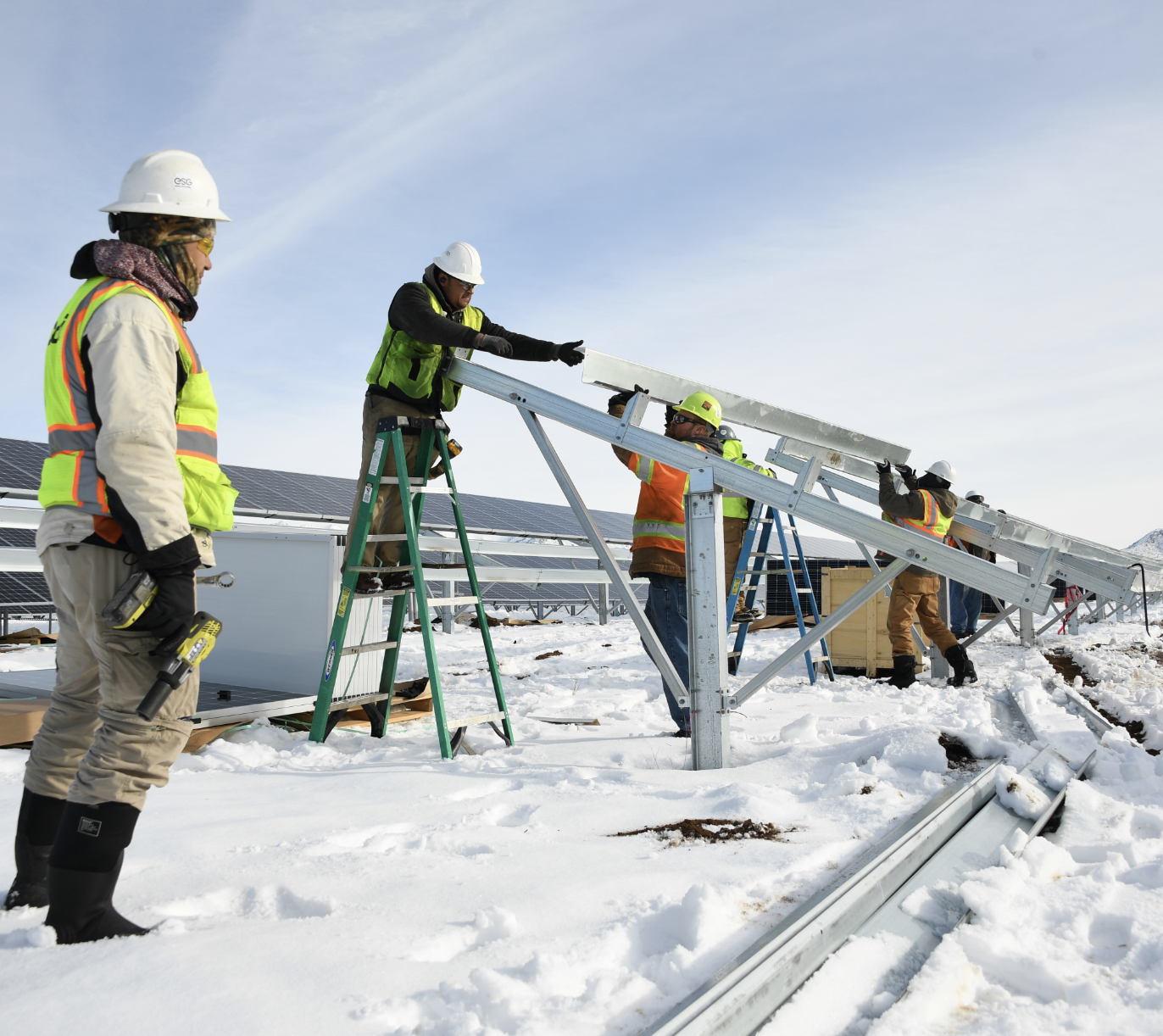 Renewables are better for our economy. As previously mentioned, renewables are becoming cheaper and cheaper, meaning they will help reduce electricity prices. They also provide more jobs than fossil fuels — for every million dollars invested, wind and solar supply more than twice as many jobs as fossil fuels. For the same amount of energy generated, wind and solar provide four times as many jobs. It’s no surprise then that employment in the wind and solar sector is surging, with some jobs growing 13 to 15 times faster than the US average. These jobs are also generally of better quality and more geographically distributed. Plus, wind turbines benefit farmers because they can voluntarily lease a small portion of their land for wind power generation and collect extra cash (as much as $6000 per MW of installed capacity, plus additional royalties). Turbines take up very little space and are spread out, leaving 98 percent of the land untouched and still available for farming. Wind and solar farms also provide thousands of dollars to local governments in tax dollars, benefitting the communities in which they were built. Finally, because small businesses and individuals can buy solar panels for their rooftops, they can actually generate their own electricity and save money. There’s no need for fuel either, as the wind and sun are inexhaustible on a human timescale. All told, converting the entire state to renewable energy would save Wisconsin more than $10,000 per person per year.
Renewables are better for our economy. As previously mentioned, renewables are becoming cheaper and cheaper, meaning they will help reduce electricity prices. They also provide more jobs than fossil fuels — for every million dollars invested, wind and solar supply more than twice as many jobs as fossil fuels. For the same amount of energy generated, wind and solar provide four times as many jobs. It’s no surprise then that employment in the wind and solar sector is surging, with some jobs growing 13 to 15 times faster than the US average. These jobs are also generally of better quality and more geographically distributed. Plus, wind turbines benefit farmers because they can voluntarily lease a small portion of their land for wind power generation and collect extra cash (as much as $6000 per MW of installed capacity, plus additional royalties). Turbines take up very little space and are spread out, leaving 98 percent of the land untouched and still available for farming. Wind and solar farms also provide thousands of dollars to local governments in tax dollars, benefitting the communities in which they were built. Finally, because small businesses and individuals can buy solar panels for their rooftops, they can actually generate their own electricity and save money. There’s no need for fuel either, as the wind and sun are inexhaustible on a human timescale. All told, converting the entire state to renewable energy would save Wisconsin more than $10,000 per person per year. -
Renewables are more reliable. Contrary to what critics allege, wind and solar are ultimately more reliable than concentrated fossil fuel plants and less susceptible to catastrophic failures and power outages. Because they are more spread out, severe weather in one area won’t affect electricity in the whole region. Even if one turbine or solar panel fails (or several), it won’t compromise the whole system — the other turbines and panels can still operate and provide electricity. This decentralized system, coupled with the fact that no fuel is necessary to generate power, makes this distributed web of renewables better prepared for inclement weather and natural disasters.
-
Renewables can help usher in a more just world. Fossil fuel power plants are often located near communities of color and low-income communities, meaning these groups suffer the brunt of the harmful health effects from local air and water pollution. Transitioning to clean and renewable energy would eliminate these sources of toxic emissions and contamination, improving the health of residents living near power plants. In addition to decreasing negative environmental impacts, the clean energy transition creates many opportunities to increase equity as well. We advocate for utility-level transitions to clean energy so that all of us can receive clean, renewable power, rather than just those who can afford to install solar panels on their homes. Additionally, clean energy job growth presents great opportunities for communities that have high unemployment rates; we support clean energy job programs that provide job opportunities to communities that need it the most.
Electrification
As utility-generated power becomes cleaner and cleaner during our transition from dirty fossil fuels to renewables like wind and solar, we need to begin and sustain a massive electrification project. Switching to clean and renewable electricity will essentially eliminate 28 percent of our greenhouse gas emissions, but what about the remaining 72 percent that come from other sources, like oil-powered transportation and gas-generated heating?
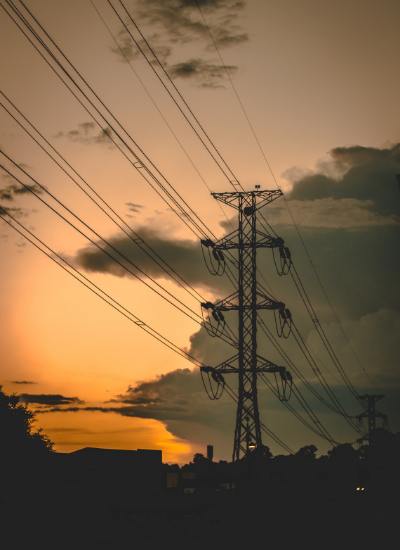 The answer is simple. If the electricity surging through the grid and coming out of our outlets is clean and carbon-free, then we should power everything — our cars, furnaces, stoves, appliances, lawnmowers, etc. — with that electricity, as opposed to dirty fossil fuels like fossil gas and gasoline.
The answer is simple. If the electricity surging through the grid and coming out of our outlets is clean and carbon-free, then we should power everything — our cars, furnaces, stoves, appliances, lawnmowers, etc. — with that electricity, as opposed to dirty fossil fuels like fossil gas and gasoline.
Commercial and residential sources of greenhouse gases — mostly in the form of burned natural gas used for heating — contribute to 12 percent of our total greenhouse gas emissions. The transportation sector — mostly powered by gasoline, diesel, and jet fuel — contributes another 29 percent of our greenhouse gas emissions. By electrifying these two sectors in addition to implementing renewable electricity, 69 percent of our power would be carbon-free.
Fortunately, this technology is mostly already available. While there aren’t yet any large passenger aircraft that run solely on electricity, we already make electric cars, trains, furnaces, stoves, driers, and lawnmowers — all we need to do is replace the existing fossil fuel-powered devices with renewable-powered electric ones.